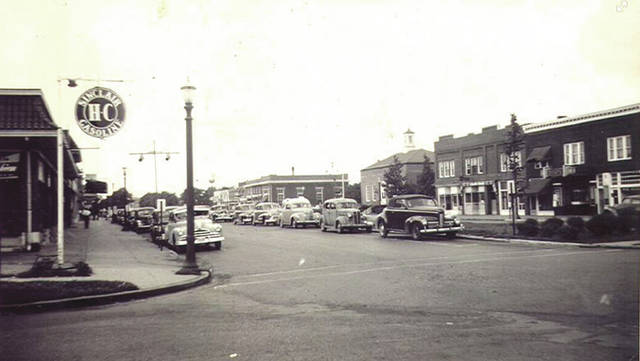





Editor’s note: This is the first story of numerous planned highlighting the history of Fairborn throughout the year.
FAIRBORN — The City of Fairborn is celebrating its 70th anniversary this year.
The story involves the merging of the Village of Osborn and the Village of Fairfield following the 1913 flood and the consequential construction of the Huffman Dam. Osborn was located at what is now known as Haddix Road, Ohio State Route 235 and the northern tip of Wright-Patterson Air Force Base and had never been subjected to a flood despite being located less than one mile away from the Miami River.
However, when the Huffman Dam was constructed along the Mad River approximately three miles south of of the village, it put Osborn in a vulnerable position for flooding.
According to “The Fairborn Story” by Mary Parker Poole, if another flood similar to the 1913 event were to sweep through the Miami Valley following the construction of the Huffman Dam, the tallest church steeple of Obsorn would have been nine feet underwater.
“The once friendly town of Osborn had become a turmoil,” Parker Poole wrote. “After the Miami Conservancy Act was passed by the state legislature to protect Dayton at the sacrifice of Osborn, the residents of the latter town carried it to the Supreme Court for decision of the constitutionality of it, but all to no avail.”
Utilizing the power of mules and tractors, Osborn residents began moving their houses in 1920 to the neighboring Village of Fairfield, according to Fairborn Area Historical Society President Carol Baugh. Fairfield was located along what is now known as The Mercer House and Broad, First, Second and Third Streets.
Baugh said it is estimated that 200 houses and 200 out buildings were moved in total. Mules would pull the facilities off the foundation, tractors would move them to the new location and mules would place the homes and buildings onto the new foundations. Baugh shared that children who were present during the moving of Osborn were interviewed in the 1970s, filling 81 cassette tapes. She is in-process of converting the tapes to a digital format to share with the public in the future.
The traction line between the two villages was located on what is now known as Wright Avenue, and the two villages co-existed until the 1950s began to approach — when citizens decided it would be beneficial to officially merge the villages together as they would then only have one police and fire department, one school district, one government center and more.
On Jan. 1, 1950, the charter that created the City of Fairborn was signed at the former theatre on Broad Street, drawing visits from state officials such as then-Ohio Governor Frank Lausche.
It was certified on Aug. 1, 1950 — officially birthing Fairborn as its own municipality.
According to former Fairborn Mayor Dan Kirkpatrick, who is also a member of the Fairborn 70th Anniversary Committee, a municipality is considered a village if its population is under 5,000. When the charter was signed in 1950, Fairborn’s population was at 7,847; its population as of 2018 was approximately 33,658. He said it is the 43rd largest city in the State of Ohio.
Kirkpatrick said the City of Fairborn is the only municipality named “Fairborn” in the entire world. It was named after the combination of each village titles — Fairfield and Osborn — which is known as a portmanteau.







